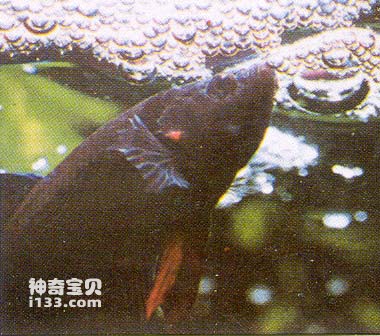Each type of fish has its own style of reproduction. Some fish have a persistent ability to protect their young in order to protect their offspring from external enemies. In order to protect their young, these fish build various nests for their children, lay their eggs in them, and wait aside to protect their development and growth.
The nesting method of betta fish is quite special. The nest it builds is a foam nest. During the reproductive season, the male fish chooses a place where the water is calm and sheltered from the wind. He blows air with his mouth and spits out mucus to form small bubbles made of mucus. Countless bubbles stick together to form a floating nest with a raised or slightly flat surface. . When the nest is built, the male fish begins to propose to the female fish. The male fish keeps swimming around the female fish, trying to show off his beautiful figure. At this time, all the fins are spread out and the mouth is opened wide. The gill membrane protrudes and red gill filaments can be seen, the body color becomes iridescent and the bird trembles due to extreme excitement.
If the female does not respond to the male's advances, the male will become angry and chase the female until he is forced to jump out of the water to escape. When the female fish accepts the courtship of the male fish, she will approach the male fish, and then suddenly lie down in the water. At this time, the male fish will stick to the female fish and turn her body upside down so that its abdomen is facing up. Underneath the female. Male and female fish each release eggs and sperm. Since the eggs are heavier than water, the eggs will sink. At this time, the male fish waiting below catches the eggs with his mouth, coats the surface of the eggs with a layer of mucus, and then swims up to stick the eggs above the floating nest. The female fish lays only 3-7 eggs each time, and after repeated actions many times, all the eggs are released. After laying eggs, the male fish has been waiting under the floating nest or swimming around it. He has to be alert that his mate will look for opportunities to swallow the eggs. After hatching, the larvae temporarily attach themselves to the floating nest. If a larvae falls from the floating nest, the male fish will drag it back to the floating nest. The conservation work of the male fish is maintained until the larvae can find food on their own and have a certain swimming ability, and then they are released from the floating nest to live on their own.

animal tags:
We created this article in conjunction with AI technology, then made sure it was fact-checked and edited by a Animals Top editor.